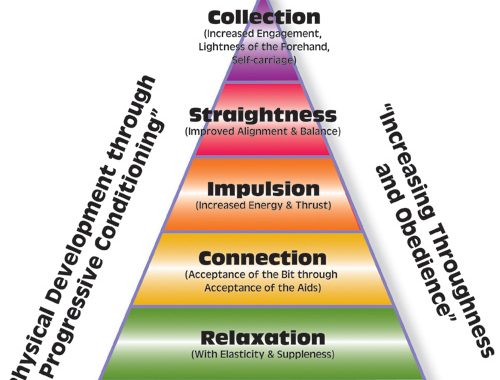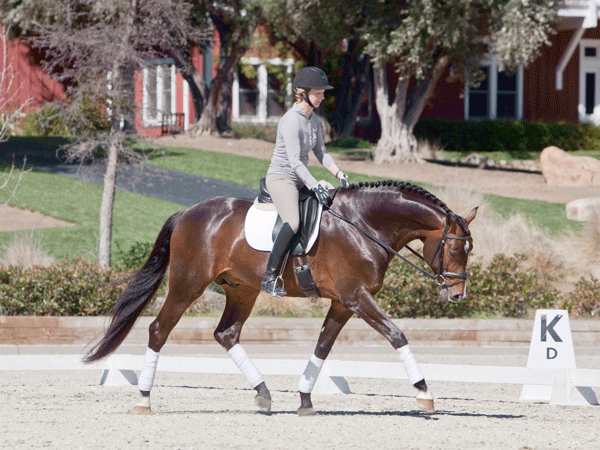Travers
Travers Defined
The travers is also known as head to the wall. The horse is bent around the rider’s inside leg in the direction of travel and should step forwards and sideways with the outside legs. Travers is performed at either the collected trot or collected canter, however, the walk can be used for introducing the movement. The forehand remains on the track. The quarters leave the track at the beginning of the travers and are not returned to the track until the end of the travers. Upon returning to the track, there should be no counter flexion of the poll or neck. In this movement, the head will remain closest to the outside of the arena or wall.
How to Execute the Travers
Start in the walk.
Ride the short side of the arena with good bend through the corner.
Continue down the long side, position the horse’s forehead looking forward down the track.
Keep the bend using the leg and hand while positioning the shoulders.
Slide the outside leg back and with light, intermittent touches, move the haunches off the track. Light touches can also be done with the whip on the horse’s outside flank.
After a few steps, reward the horse and straighten while proceeding onward.
Notes:
The horse should be rounded, relaxed and maintaining good rhythm before beginning this exercise.
It is often beneficial to ride shoulder in prior to starting this exercise.
The horse should bend around the inside leg.
The rider’s shoulders should be parallel to the horse’s shoulders.
The outside rein controls the movement forward and sideways, as well as the outside shoulder.
Half halts on the outside rein will maintain control of the outside shoulder.
When applying the outside leg, the rider must continue touching the horse with the inside leg at the girth to maintain the bend.
This exercise can be performed in all three gaits.
Purpose of the Travers
To develop lateral suppleness.
To develop the trot.
To aid in the development of the collected trot.
Common Errors in Execution
The horse loses cadence.
The horse does not step under properly from behind.
Too much bend in the horse’s neck.
Author: Dressage Academy
Stretch Down Circle
Trot
You May Also Like

Rhythm – Let’s Get into the Groove Newsletter
March 28, 2018
The Not-So-Secret, Secret Dressage Training Formula Article
December 31, 2017